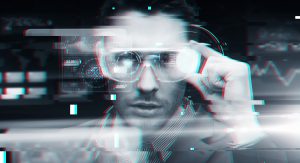NAUI Worldwide members all share a deep passion for underwater exploration and conservation. Scuba diving connects us with the ocean, enabling us to marvel at the vast array of life it sustains. With evolving technology, our relationship with the ocean is only becoming deeper, literally and metaphorically. Let’s look at some ways technology is or will be revolutionizing our beloved activity.
Underwater Drones
Underwater drones include ROVs (Remotely Operated Vehicles) and AUVs (Autonomous Underwater Vehicles), both of which are a game-changer. Both ROVs and AUVs can be equipped with high-resolution cameras and robust navigation systems, these devices can go deeper and stay longer underwater than any human diver. ROVs are connected to a ship/vessel by cables whereas an AUV can be dropped in the ocean and then picked up at a pre-selected location. They provide an unprecedented capacity to document marine life, wreckages, and other underwater structures. Moreover, they can help divers pre-plan dives by revealing potential hazards or areas of interest.
Artificial Intelligence (AI) and Data Analysis
Artificial intelligence is seeping into every field, and scuba diving is no exception. Divers can now use AI-powered software to analyze their dive data, including depth, time, and gas mix. These programs can provide valuable insights into personal diving patterns, helping divers plan safer and more efficient dives. Additionally, machine learning algorithms are being used to identify species from underwater photographs, contributing to marine biodiversity data.
Augmented Reality (AR) Diving Masks
Imagine swimming alongside a manta ray, and as you gaze at it, your diving mask displays information about the creature – its species, diet, migration patterns, and more. This is not a sci-fi fantasy; Augmented Reality (AR) diving masks will make it possible. AR masks overlay digital information onto the real-world view, enhancing divers’ understanding of their environment. Envision the potential communication applications, such as sending messages that appear in your dive buddies mask allowing voiceless communication with those you dive with and having all the necessary dive information you need displayed in your mask rather than looking at a computer on your wrist. While still in the early stages, this technology promises to transform the diving experience profoundly.
Eco-friendly Dive Gear
Aware of the environmental challenges the oceans face, many divers are keen to minimize their impact. Fortunately, several companies are developing more sustainable diving gear. For instance, wetsuits made from natural rubber or recycled plastic, and fins and masks produced using biodegradable materials. Choosing these options not only helps conserve the marine environment but also sends a strong message about the diving community’s commitment to sustainability.
The Internet of Underwater Things (IoUT)
IoUT is a network of smart devices that can exchange data underwater. These could include drones, sensors, autonomous underwater vehicles (AUVs), and even the dive computers on divers themselves. The IoUT can monitor water temperature, currents, pollution levels, and marine life, contributing to our understanding of the ocean’s health.
Technology is shaping the future of scuba diving, allowing us to explore deeper, understand better, and contribute more significantly to marine conservation. As we adopt these innovations, it is essential to remember that they are tools to enhance our connection with the ocean, not replace it. Our respect for the marine world, our skills as divers, and our commitment to its protection are what truly make us NAUI Worldwide members. Let’s continue to dive responsibly and inspire others to do the same.







